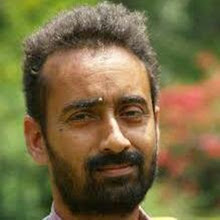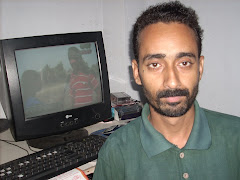Patna, January 6 (ANI)
As soon as the first confirmed patient diagnosed with the Ebola virus
landed in Delhi, the Indian health authorities made sure that the
patient was quarantined in order to "rule out even the remote
possibility of spread of this disease".
Officials have been preparing for months, installing screening systems at international airports and preparing quarantine sites in major cities. The commitment towards public health is indeed commendable.
On the other hand, such commitment is clearly missing when it comes to fighting the deadly Acute Encephalitis Syndrome (AES) that has, for the last two decades, been wreaking havoc in several districts of the eastern Indian State of Bihar, like Muzaffarpur, East Champaran, Sitamarhi, Shivhar, Samastipur, Vaishali, and Begusarai .
In 1995, Kothiya Village in Kanti Block of Muzaffarpur District in Bihar came into the headlines when over 125 children died undiagnosed in Kaanti and Minapur blocks. Jaleshwari Devi's ten-year old daughter was the first victim of this epidemic. In the last twenty years, several hundred mothers have lost their children to this disease now familiar to the residents of various villages in Muzaffarpur as Acute Encephalitis Syndrome (AES).
This epidemic attains a peak every year in May-June in almost 236 villages of Muzaffarpur, killing innocent children ; it disappears in the monsoons, only to surface again the following year. In 1996, almost 1000 children suffered from AES, of which 350 lost their lives. In 2012, once again almost 184 children died an untimely death. In 2014, almost 800 children suffered from AES, with nearly 150 dead. Despite several researchers trying to solve the mystery behind it, the reasons still remain unknown.
Last year, samples were said to be sent for testing to California but no progress has been reported so far. A vaccination campaign was also run in the affected areas but the last visit of the former Union Health Minister Dr. Harsh Vardhan to Kothiya village unveiled a different reality - he said that 92 percent children have not been vaccinated against this disease. Then on 22-23 June, a special vaccination campaign was organized and 43,269 children were vaccinated.
Jeetan Ram Manjhi, the first chief minister to visit this area after 1996, was reportedly infuriated to see the pathetic condition of health infrastructure in these areas, and demanded to know what role the Health Departments had been playing. There is no neurologist;hospitals lack MRI testing facilities; there is no proper arrangement for ambulances to take the referred cases to city hospitals. Dasai Paswan could not get an ambulance to bring home the body of his 10 year old son who lay on the ground for hours. Tragically, this disease is affecting only poor children - the ones struggling against malnutrition and poverty.
The malnutrition eradication programmes being run by UNICEF and the State Government have also failed to produce effective results. As per the former Union minister and a doctor by profession, Dr. CP Thakur, "Malnutrition is the most common factor amongst Encephalitis patients, besides poor vaccination and poor standards of living."
In the opinion of some doctors, children affected with AES die mainly because of unbalanced blood sugar levels. But its root cause is yet to be identified. After inducing glucose to the patient, sugar levels go up to 100 but drop down in no time. Experts say that the children can be saved only if blood sugar level is maintained.
Dr. T Jacob John, Virology Expert from Vellore, and Dr. Mukul Das from Lucknow-based Indian Institute of Toxicology raised questions about lychee during their research. Current Science vol. 106, No. 9 and 10, published in May 2014, says that methylenecyclopropyl-glycine (MCPG), a variant of hypoglycin A, is found in lychee and its consumption reduces glucose levels in the body.
However, the Infant Department of Muzaffarpur based 'Shree Krishna Medical College and Hospital (SKMCH)' dismisses the research saying that children who did not eat lychee but consumed proper diet were also affected by this disease.
Chief Scientist of National Litchi Research Center, Dr. Rajesh Kumar said that Lychee's anti-oxidant and anti-viral qualities are the pride of Bihar. It contains 70 to 75 mg vitamin C in per 100 gm edible product which increases the resistance power of the body. Considering it a disease is fallacious.
The Charkha Development Communication Network feels that a lot has been said and done this year but not knowing what ought to go into practice has left destitute parents in the paralyzing fear that next year it could be their child fighting the deadly disease.
The views expressed in the article are of Mr.Santosh Sarang(ANI)
http://www.aninews.in/newsdetail10/story198451/acute-encephalitis-syndrome-paralyzing-fear-in-bihar.html
Officials have been preparing for months, installing screening systems at international airports and preparing quarantine sites in major cities. The commitment towards public health is indeed commendable.
On the other hand, such commitment is clearly missing when it comes to fighting the deadly Acute Encephalitis Syndrome (AES) that has, for the last two decades, been wreaking havoc in several districts of the eastern Indian State of Bihar, like Muzaffarpur, East Champaran, Sitamarhi, Shivhar, Samastipur, Vaishali, and Begusarai .
In 1995, Kothiya Village in Kanti Block of Muzaffarpur District in Bihar came into the headlines when over 125 children died undiagnosed in Kaanti and Minapur blocks. Jaleshwari Devi's ten-year old daughter was the first victim of this epidemic. In the last twenty years, several hundred mothers have lost their children to this disease now familiar to the residents of various villages in Muzaffarpur as Acute Encephalitis Syndrome (AES).
This epidemic attains a peak every year in May-June in almost 236 villages of Muzaffarpur, killing innocent children ; it disappears in the monsoons, only to surface again the following year. In 1996, almost 1000 children suffered from AES, of which 350 lost their lives. In 2012, once again almost 184 children died an untimely death. In 2014, almost 800 children suffered from AES, with nearly 150 dead. Despite several researchers trying to solve the mystery behind it, the reasons still remain unknown.
Last year, samples were said to be sent for testing to California but no progress has been reported so far. A vaccination campaign was also run in the affected areas but the last visit of the former Union Health Minister Dr. Harsh Vardhan to Kothiya village unveiled a different reality - he said that 92 percent children have not been vaccinated against this disease. Then on 22-23 June, a special vaccination campaign was organized and 43,269 children were vaccinated.
Jeetan Ram Manjhi, the first chief minister to visit this area after 1996, was reportedly infuriated to see the pathetic condition of health infrastructure in these areas, and demanded to know what role the Health Departments had been playing. There is no neurologist;hospitals lack MRI testing facilities; there is no proper arrangement for ambulances to take the referred cases to city hospitals. Dasai Paswan could not get an ambulance to bring home the body of his 10 year old son who lay on the ground for hours. Tragically, this disease is affecting only poor children - the ones struggling against malnutrition and poverty.
The malnutrition eradication programmes being run by UNICEF and the State Government have also failed to produce effective results. As per the former Union minister and a doctor by profession, Dr. CP Thakur, "Malnutrition is the most common factor amongst Encephalitis patients, besides poor vaccination and poor standards of living."
In the opinion of some doctors, children affected with AES die mainly because of unbalanced blood sugar levels. But its root cause is yet to be identified. After inducing glucose to the patient, sugar levels go up to 100 but drop down in no time. Experts say that the children can be saved only if blood sugar level is maintained.
Dr. T Jacob John, Virology Expert from Vellore, and Dr. Mukul Das from Lucknow-based Indian Institute of Toxicology raised questions about lychee during their research. Current Science vol. 106, No. 9 and 10, published in May 2014, says that methylenecyclopropyl-glycine (MCPG), a variant of hypoglycin A, is found in lychee and its consumption reduces glucose levels in the body.
However, the Infant Department of Muzaffarpur based 'Shree Krishna Medical College and Hospital (SKMCH)' dismisses the research saying that children who did not eat lychee but consumed proper diet were also affected by this disease.
Chief Scientist of National Litchi Research Center, Dr. Rajesh Kumar said that Lychee's anti-oxidant and anti-viral qualities are the pride of Bihar. It contains 70 to 75 mg vitamin C in per 100 gm edible product which increases the resistance power of the body. Considering it a disease is fallacious.
The Charkha Development Communication Network feels that a lot has been said and done this year but not knowing what ought to go into practice has left destitute parents in the paralyzing fear that next year it could be their child fighting the deadly disease.
The views expressed in the article are of Mr.Santosh Sarang(ANI)
http://www.aninews.in/newsdetail10/story198451/acute-encephalitis-syndrome-paralyzing-fear-in-bihar.html














0 Comments